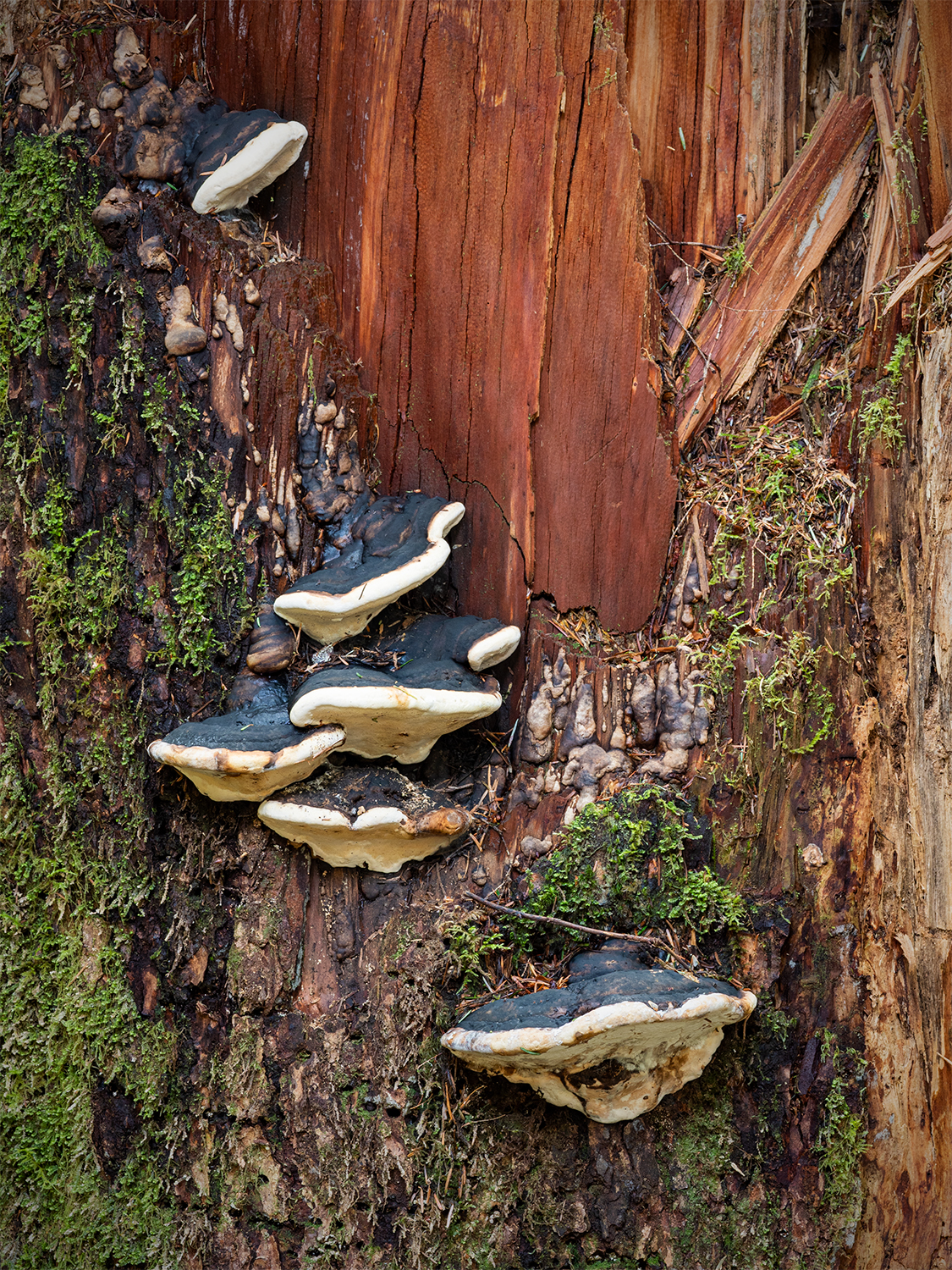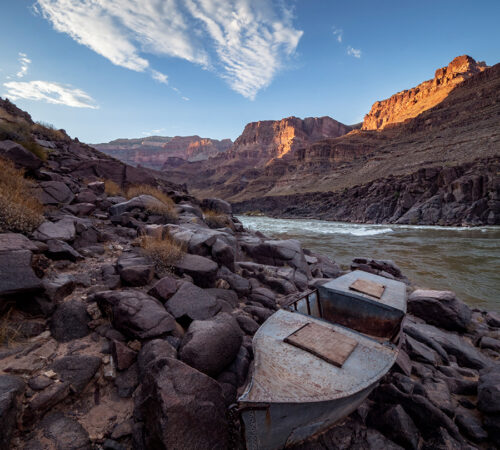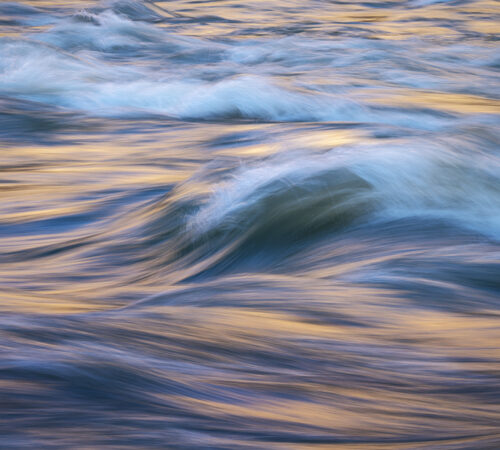Go for the Gold

Dear Bubbles:
I’ve heard you reference “wabi-sabi” in one of your presentations. What in the heck is “wabi-sabi?”
~Curious
Dear Curious:
In 2003, during a photography workshop I took to help me transition from black-and-white negative development to color slide film, the instructor suggested that he looked flawless specimens of wildflowers. His photography stock agent had told him they wouldn’t accept anything with blemishes. So that’s what he tried to photograph. To my naïve brain ripe with perfectionistic tendencies, that sounded reasonable enough.
Until I started looking on my own for the purest samples of flowers, of leaves, of waterfalls, of rocks…and couldn’t find one.
I found flaws in everything I saw. That flower was missing a part of its petal. That leaf had been munched by bugs and had holes in it. That water wasn’t flowing hard enough over the “right” rocks. Ugh!
It’s one thing to be picky about our subjects and compositions, reserving our pixels (and back in the day, film) for the things and moments that mean something special to us. It’s another to be so fussy that you walk away from perfectly acceptable—and meaningful—compositions for overly critical reasons. In the months that followed the workshop, I made very few photographs. And I was in a constant state of frustration and disappointment. That’s not exactly what I hoped and dreamed photography would offer me (at the time, as a hobby and as an outlet to my stressful corporate IT job).
That approach, thankfully, ran its course in a single summer. Even the staunchest of perfectionist inside me quickly realized that it was not only a ridiculous waste of time searching for an ideal that didn’t exist, but it was also not the attitude I wanted to carry through my life about the incredibly remarkable world around me. Why should the beauty of a field of vibrant and colorful wildflowers be diminished and overlooked simply because they were past their peak blooming stage? Why couldn’t I celebrate a bug finding itself a delicious meal in the same way I marveled over a leaf turning color? Why couldn’t I appreciate how water had enough persistence to find a course through that one hard rock and not another? There had to be a different way.
There was. And “all” it took was an attitude shift. Enter wabi-sabi. (Not to be confused with “wasabi,” the Japanese condiment.)
Wabi-sabi, also sometimes expressed without a hyphen as wabi sabi, is a Zen Buddhism philosophy and aesthetic. The word “wabi” refers to spatial relationships. “Sabi” refers to time. Together, as author Leonard Koren describes his book, Wabi-Sabi for Artists, Designers, Poets, & Philosophers, “Wabi-sabi is a beauty of things imperfect, impermanent, and incomplete. It is a beauty of things modest and humble. It is a beauty of things unconventional.” He later references wabi-sabi as the “Zen of things.” The concept, which originated in the 16th century in Japan, encourages a deeper, richer exploration and connection with nature beyond Western society’s narrow and limiting definition of attractiveness and desire.
I had the fortunate opportunity to visit Himeji, Japan in 2007—my second trip to the country—for a Through Each Other’s Eyes cultural photography exchange. There, and then, I learned about the concept of “kintsugi”—an extension and practical application of wabi-sabi. It’s the ancient Japanese art of repairing broken things with some form of gold. (The word “kintsugi” means “golden joinery.”) Instead of throwing damaged goods out, the change is visibly highlighted with a precious metal and outwardly celebrated with a color that is perceived to represent “success, wealth, achievement.” That notion, as a recovering perfectionist who spent the first 40 years of my life focused on accomplishments while desperately hiding my shortcomings, hit me pretty hard.
Through other major life-changing events starting in 2015, I’ve come to realize that celebrating the weird, broken, cracked, aged, decayed, flawed, and unfinished—and not just the pretty, good, happy, intact, youthful, new, faultless, and complete—is to recognize, accept, and embrace the fullness and richness of a worthy life. Challenging and setting aside unrealistic societal and personal expectations around perfection is the path to peace and fulfillment.
(I intentionally abstained from using the word “happiness” in that last sentence—and do so in general—since society typically associates the word “happiness” with this idea of a relentless pursuit of attaining state of constant bliss at all costs, usually by avoiding the unhappy, difficult, and hard experiences. Which isn’t achievable. Trust me, I’ve tried. I used to run full speed ahead on the hedonic treadmill. It’s exhausting and maddening. Plus trying to reach such a state only seems to cause suffering which no one wants to bring upon themselves or others. I digress.)
Now when I stand in a field of wildflowers, I seek out the so-called imperfections. The holes, discoloration, odd shape, or unusual size are what gives a bloom its character, its story, its connection to its own place and time, and its uniqueness from the others around it. The variations and differences are the very thing that makes them beautiful. I feel the same about leaves, waterfalls, rocks, and everything else. In the photo to the right, the fungi growing on a tree (which typically indicates the tree is unwell…) along a trail in Olympic National Park is what stopped me in my wanderings in the forest this past spring. In fact, when I made this frame, I whispered, “Wabi-sabi.” The colors, the pattern, the wear and tear of the bark were all reminders of the value of the “imperfect, impermanent, and incomplete” in nature, photography, life, and ourselves.
When I’m out photographing, I try to incorporate this mindset into how I approach my work and make my artistic decisions by:
Paring down gear. One of the pillars of wabi-sabi, according to Loren, is to “get rid of all that is unnecessary.” I described how I lightened my load by switching from a DSLR to a mirrorless camera in an earlier post, “Switching Gear.” Even still, if I’m going on a longer hike or a paddle, I may only take my camera with one lens (my 14-150mm lens, which is a 28-300mm equivalent in 35mm terms), a polarizer, and an extra battery. Maybe an extension tube or two, too, if I’m feeling a macro vibe coming on. Yes, I sometimes miss composing perfectly since I don’t have a long enough, or short enough, lens. Yes, I also miss compositions when I bring my entire kit. We simply cannot photograph it “all” no matter what we do. As the saying goes, “Less is more.” It’s more important you know how to maximize your capabilities with minimal equipment than to burden yourself with 30 pounds of gear. Just ask your knees, back, and neck.
Appreciating objects, scenes, flora, fauna, and people, just as they are in this exact moment. Eliminating expectations of how things should, could, or would be also eliminates frustration and disappointment. Cherish the present moment without concern for the past or future. No moment in your lifetime will ever be repeated. Celebrate each one for what they are. Nature, and life events, inherently aren’t good or bad. Only humans judge and labels things as such. Avoid comparison and hierarchical thinking to appreciate the world and our experiences just as they are as they transpire.
Paying attention to the distinctiveness of everyday moments. You can, but you don’t have to, spend thousands of dollars or weeks of time traveling around the world to find moments that matter to you. The way the morning sun casts a shadow on a wall. Bubbles gathering in a cup of coffee. The taste of freshly made pie. The magic is all around us, all the time, if we are mindful enough to see it.
Challenging judgments, biases, and habits when things appear differently than you expected. Who doesn’t love a pretty fiery sky over a landscape scene at sunrise or sunset? But what happens when there isn’t a cloud in the sky? Do you go home in frustration? I don’t anymore. (I used to when I first started photography and thought it was all about “nailing the shot.” It’s not…) The bigger question is, “What is it about blue skies that doesn’t appeal to you? What’s causing you to avoid it?” Because blue is routinely ranked as human’s top favorite color. For me, I avoided blue skies early in my career not because they were pedestrian and mundane (see the paragraph just above this one that starts with “Paying attention to the distinctiveness of everyday moments.”) but rather because I lacked skill and knowledge—I hadn’t a clue what to do with cloudless days. I’m picking on blue skies to make a point: we don’t control the weather (and a lot of other things…), but we do control our response to it. Now, it’s a game, a challenge, a puzzle for me to figure out what I can do with the cards that Mother Nature has dealt to me no matter the light, weather, or other external conditions. Create opportunities for yourself; don’t erect unnecessary barriers in your way. Life is hard enough as it is. Remember that you bring the creative juice to every situation you encounter. Have confidence in your ability to interpret and express the world in your own way in all conditions—rain, snow, fog—not just the supposed ideal, easy ones.
Knowing the difference between the pursuit of perfection and the pursuit of excellence. When it comes to technical execution of my photographic vision, I strive for the latter. When I find something I wish to photograph, I want my exposure to be correct. I usually want to my image to be tack sharp (but not always). I want to ensure I don’t have any distracting objects pulling attention away from my intended message. I try to get the absolute best picture (which is “only” data since I photograph in RAW format…) out of my camera in the field to enable my processing work and finalization of my vision. Do I get it perfect every time? No, of course not. I sometimes underexpose, don’t get everything in the plane of focus, and miss an out of focus branch. And yes, I get bummed out when I mess up. But, I always try to do the best I can, and I learn from my mistakes as I go. Pursuing excellence, not perfection, is how we progress in our art and lives. And while we may make photographs that we’re proud of along the way, our learning journey is always evolving and never complete. As the line from the 1970s TV show Kung Fu advises, “Patience, young grasshopper.”
Simplifying compositions. Remember that earlier bit about “Less is more?” Goes for our visual arrangements, too. Once you’d defined your intended message for your photograph, ask yourself if you need that rock, that tree, that branch, that cloud, etc. in your frame to successfully convey it. Is every visual element within your frame helping you say what you wish to say? If not, recompose, get closer, change lenses—do whatever you need to do to eliminate it to get to the essence of your vision. What’s that you say? You’ve tried everything to get rid of an unsightly branch or a bright spot to no avail? Ahhh, yes, Mother Nature does not fall into place perfectly for the mere benefit of our photographic desires. Do the best you can to minimize it. And remember, there’s always clone stamp, spot healing, and the new remove function in Adobe Photoshop. Or wabi-sabi. Celebrate the imperfection of the Great Outdoors instead of trying to rid yourself of it. Make it part of your visual story. Turn it into gold.
Letting your own heart and soul direct your photographic (and life) endeavors. Without letting outside influences sway your opinion, what do you find beautiful, and why? What are your values? What do you wish to celebrate while you’re on this planet? Your answers, no matter what they are, are the whole point of artistic and personal expression—personalizing and sharing your unique experiences during your time on Earth. Photograph what means something to YOU for ANY reason YOU chose. It’s OK that my instructor from 2003 had (and has) a different approach than I choose for my work and for wildflowers. It’s OK that I photograph bubbles and you photograph butterflies or trucks or the Milky Way. It’s OK that I eat pie for breakfast sometimes, and you prefer cake or donuts or raisin bran instead. Discover what works for you. Define your own values. Change your mind if you want. Only you can know and live your own fulfillment. We only get one run through this life. So make it good according to your own definition. Make it count.
As author Beth Kempton said in her book, Wabi Sabi, a Japanese Wisdom for a Perfect Imperfect Life, “Put simply, wabi sabi gives you permission to be yourself…And it shows you that beauty can be found in the most unlikely of places, making every day a doorway to delight.”
And that’s how I want to approach and experience the world. I wish the same for you—in whatever way you choose.
So be well, be wild, and go for the gold,
Bubbles
If you liked this post, please consider supporting Dear Bubbles either through a monthly contribution through Patreon or a one-time donation through Buy Me a Coffee. Learn more about both at https://dearbubbles.com/support.
Have a question about photography, art, and/or the creative life? Need some advice? Looking for inspiration? Send your question to Dear Bubbles at colleen@colleenminiuk.com to be possibly featured in a future column post. (If you’d prefer a different display name than your real first name, please include your preferred nickname in your note.





2 Comments
Cynthia Hollingsworth
Wonderful article Bubbles! One of my favorite thus far
Bubbles
Hooray! Thanks for reading and for the positive feedback, Cynthia! 😀